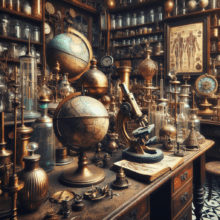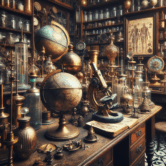Silver has transcended its role as a mere precious metal, becoming a cornerstone of various industries and a fundamental element in technology, health, and finance. This article delves into the multifaceted uses of silver, its historical significance, and its contemporary relevance, providing insights into its enduring value.
Table of Contents
- Introduction to Silver
- A. Historical Context
- B. Physical and Chemical Properties
- Industrial Uses of Silver
- A. Electronics
- B. Solar Energy
- C. Water Purification
- D. Photography
- Medical Applications of Silver
- A. Antimicrobial Properties
- B. Medical Devices
- C. Wound Care Innovations
- Silver in the Financial Market
- A. Investment Trends
- B. Comparison with Other Precious Metals
- Cultural Significance of Silver
- A. Uses in Jewelry and Fashion
- B. Symbolism and Traditions
- Environmental Impact of Silver Mining
- A. Sustainable Practices
- B. Regulations and Challenges
- Future Trends in Silver Utilization
- A. Tech Innovations
- B. Global Economic Factors
- FAQ Section
- A. Common Questions about Silver
- B. Expert Opinions
1. Introduction to Silver
A. Historical Context
Silver has an illustrious history that dates back thousands of years. Ancient civilizations used silver not just as currency but also for decorative purposes. The earliest known references to silver date back to 4000 B.C. in Anatolia (present-day Turkey), where it was used for various artifacts. Throughout history, it has played a crucial role in trade and commerce, serving as a foundation for economic systems in cultures ranging from the Egyptians to the Romans.
B. Physical and Chemical Properties
Silver is a metallic element with the chemical symbol Ag (from Latin "argentum"). With an atomic number of 47, it is known for its excellent conductivity, reflectivity, and malleability. In its pure form, silver is highly reactive to sulfur and chloride, which can tarnish its surface. The unique properties of silver make it indispensable in various applications across multiple sectors.
2. Industrial Uses of Silver
A. Electronics
The electronics industry significantly relies on silver for its conductive properties. Silver’s high conductivity surpasses that of other metals, making it ideal for circuitry, connectors, and networking devices. For instance, smartphones, tablets, and computers often contain silver in their main circuit boards, enhancing performance and reliability.
B. Solar Energy
Silver’s role in renewable energy, particularly in solar panels, has grown tremendously. Photovoltaic cells, which convert sunlight into electricity, use silver paste for their conductive properties. This use highlights silver’s critical role in the push for a sustainable future. Studies show that solar panels can significantly increase energy efficiency with a higher silver content.
C. Water Purification
Silver ions are employed in water purification processes due to their antimicrobial properties. Many filtration systems utilize silver nanoparticles to kill bacteria and other harmful microorganisms, making water safe for consumption. This technology can be found in various applications, from household products to larger municipal water treatment facilities.
D. Photography
Although digital photography has largely replaced traditional methods, silver halides were once essential in developing photographic films and papers. The unique light-sensitive properties of silver compounds made them invaluable in capturing images. Even today, some artists and professionals may use silver-based techniques for their unique aesthetic qualities.
3. Medical Applications of Silver
A. Antimicrobial Properties
Silver is renowned for its antimicrobial properties, inhibiting the growth of bacteria and fungi. Its use in healthcare has surged, especially in an era where antibiotic resistance is a growing concern. Medical professionals increasingly use silver-coated devices, such as catheters and surgical instruments, to reduce infection rates in patients.
B. Medical Devices
In the realm of medical technology, silver plays a crucial role as a coating material. Its natural biocompatibility allows it to be safely used in implants and surgical tools. Moreover, advancements in nanotechnology have led to the development of silver nanoparticles, which are proving effective in various medical applications from wound dressings to cutting-edge therapies.
C. Wound Care Innovations
Silver-infused wound dressings have gained popularity due to their ability to promote healing while preventing infection. These dressings release silver ions, which create a hostile environment for pathogens while fostering healing in the tissue. Clinical trials have illustrated significant improvements in recovery times for patients using silver-based wound care products.
4. Silver in the Financial Market
A. Investment Trends
Investing in silver has become increasingly popular as individuals look for sustainable assets during economic uncertainty. Unlike fiat currencies, silver holds intrinsic value, and its price often rises during inflationary periods. Silver is regarded as a ‘safe haven’ investment similar to gold and has seen an uptick in interest due to its accessibility and potential for growth.
B. Comparison with Other Precious Metals
When compared to gold and platinum, silver presents unique advantages and disadvantages. Its price volatility is generally higher, which can lead to greater short-term profits or losses for investors. However, silver’s industrial demand creates an underlying support for its value that precious metals without industrial uses may lack.
5. Cultural Significance of Silver
A. Uses in Jewelry and Fashion
Silver has been a favored material in jewelry-making for centuries. Its luster and malleability allow artisans to create intricate designs, making it a popular choice across different cultures. In many societies, silver jewelry is more than just ornamental; it carries social and cultural significance often reflecting individual status or identity.
B. Symbolism and Traditions
Throughout history, silver has been a symbol of wealth, purity, and clarity. Various cultures celebrate important life milestones with silver gifts, such as christenings or weddings. The phrase "silver lining" speaks to its historical representation of hope and optimism, which continues to resonate in today’s vernacular.
6. Environmental Impact of Silver Mining
A. Sustainable Practices
Silver mining poses significant environmental challenges, including habitat destruction and water pollution. However, advancements in sustainable mining practices are leading to reduce the ecological footprint of silver extraction. Efforts include utilizing eco-friendly chemicals, reducing emissions, and engaging in community-friendly mining operations that prioritize local ecosystems.
B. Regulations and Challenges
The silver mining industry faces stringent regulations aimed at protecting the environment and human health. Ensuring compliance with these regulations can be challenging and costly for mining companies. Additionally, public awareness and activism play a vital role in shaping mining practices and holding companies accountable for their environmental impact.
7. Future Trends in Silver Utilization
A. Tech Innovations
As technology evolves, new applications for silver are emerging. Innovations in fields like nanotechnology are paving the way for silver’s use in more advanced electronics, biosensors, and even space exploration equipment. The quest for sustainability will further drive the demand for silver in renewable energy technologies.
B. Global Economic Factors
Shifts in global economic dynamics, such as increased industrialization in developing countries and a growing emphasis on green technologies, will likely influence silver’s demand. Understanding these economic trends will help investors and stakeholders anticipate changes in the silver market and capitalize on emerging opportunities.
8. FAQ Section
Common Questions about Silver
-
Why is silver used in technology?
Silver has excellent conductive properties, making it ideal for electronic components. -
Is silver a good investment?
Yes, many consider silver a ‘safe haven’ investment, particularly during economic uncertainty. -
Does silver have health benefits?
Silver is known for its antimicrobial properties and is used in various medical applications to prevent infection. -
What are the environmental impacts of silver mining?
Silver mining can lead to habitat destruction and pollution, but sustainable practices are being developed to mitigate these effects. - How does silver compare to gold as an investment?
While more volatile than gold, silver’s industrial applications provide a unique underlying demand that can enhance its value.
Resources
| Source | Description | Link |
|---|---|---|
| U.S. Geological Survey | Information on silver mining statistics | USGS Silver |
| Silver Institute | Educational resources on silver’s industrial uses | Silver Institute |
| National Center for Biotechnology Information | Studies on silver’s microbial resistance | NCBI |
| Investment Company Institute | Trends in silver investment | ICI |
| World Silver Survey | Annual market report on silver | World Silver Survey |
Conclusion
In summary, the versatility and timelessness of silver in modern society cannot be underestimated. From industrial applications to cultural significance and medical advancements, silver remains integral in various aspects of life. As we look to the future, advancements in technology and sustainable practices will likely drive further developments in silver utilization.
Disclaimer
This article is produced by AI for informational purposes only. The information provided is not intended as financial, medical, or professional advice. Please consult qualified professionals for guidance in those areas.
By examining the myriad roles of silver in our world, it becomes clear that this precious metal continues to hold significant value today and will likely retain its relevance in the future. Further study of silver’s applications and impacts can illuminate even more opportunities for innovation and sustainability.







